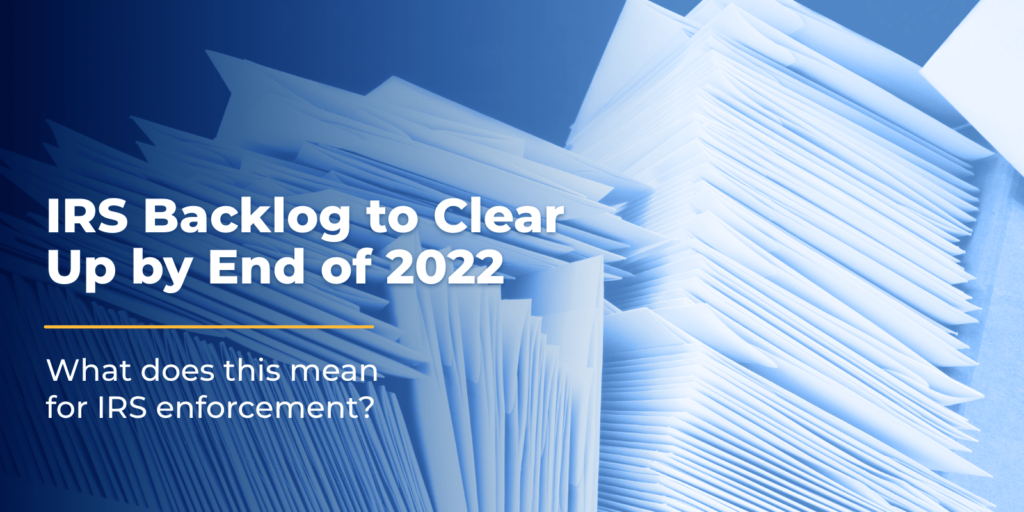
At the start of the COVID-19 pandemic, the IRS was forced to close its doors. Since reopening, there has been an extensive backlog of tax returns that the organization couldn’t seem to catch up on. Many American taxpayers have been waiting for refunds that are a year or more behind. In recent weeks, Commissioner Charles Rettig stated that the IRS backlog is due to clear up by the end of 2022.
What has changed for the IRS?
In addition to the complications of being a business in the midst of a pandemic, being understaffed has also immensely affected the turn-around for tax returns. This month, the IRS has accelerated their recruiting process in order to reach a goal of hiring 10,000 new employees. The hiring push is expected to cut tens of millions of tax returns in the backlog.
What does a clear backlog mean for 2023 filing season?
Commissioner Rettig said, “As of today, barring any unforeseen circumstances, if the world stays as it is today, we will be what we call ‘healthy’ by the end of the calendar year 2022, and enter the 2023 filing season with normal inventories.”
This means that next year, the IRS will likely resume usual enforcement and collection activity. With a lack of backlogged returns and a mostly healthy nation, in addition to thousands of new hires, the IRS can operate normally- if not better than the last two years.
What does IRS enforcement look like?
When you have a penalty or fall behind in paying your taxes, you should expect a notice from the IRS. The notice is the first step in communicating a liability. From there, your penalty can accrue interest daily until paid.
The IRS is also known for applying liens and levies, taking legal possession of your assets. Ideally, you want to contact them before this point to gain compliance and prevent worst-case scenarios.\
What if you owe back taxes currently?
At Optima, we help clients that are facing tax debt in their journey to a resolution. Give us a call at (800)536-0734 for a free consultation today.